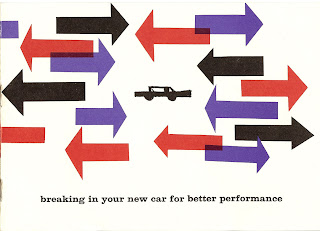- Make, model and year of vehicle
- Manual or Automatic transmission, with or without overdrive
- 3,4, or 5 speed transmission
- Make and model of transfer case
- Engine size and type (diesel or gasoline - 4, 6, or 8 cylinder)
- Axle ratio
- Series of drive shaft
- Wheel base of vehicle
- Location of Driveshaft (front or rear)
To determine replacement driveshaft by application you will need to know:
Maintaining your Battery
Begin with the simple: keeping your battery clean. A dirty case can actually cause current to drain. Wipe with a damp rag. Use a mild detergent if necessary.
Breaking In your Car
During the break-in period, typically the first 1,000 miles (1,600 km), keep your speed under 55 mph (88 kpm) or to the speed recommended by your car’s manufacturer.
Brake the right way
A car consumes most gas as it accelerates. It's a simply law of physics (force equals mass times acceleration). A moving car doesn't require much gasoline to keep moving (due to the inherent inertia). In real life this means, in order to improve your mileage you need to keep the ride smooth. Let me give you some examples.
About 30% of the drivers I see in somewhat heavy traffic apparently cannot control their speed with the accelerator pad alone. Instead I see those guys speed up and slam on the brakes all the time. Obviously, that makes the guy following too close behind very nervous and he too needs to brake and accelerate constantly. In really heavy (but still moving) traffic about 90% of the cars do this. It is relatively easy to hold a speed in a long line of cars without stepping on the brake. Just keep a little bit more distance and try to practice this. If the traffic moves along, you rarely need to brake, unless everything slows down. If you pay attention to the cars ahead of you (not just the one right in front of your nose, but the other cars ahead of that one), you can anticipate when things will slow down and you can ease off the gas. This means you won't lose all that power to friction (on the brakes) and you can keep your speed without having to accelerate. In heavy traffic this is the most efficient way to save gas and can easily get you 10% - 20% better gas mileage.
About 30% of the drivers I see in somewhat heavy traffic apparently cannot control their speed with the accelerator pad alone. Instead I see those guys speed up and slam on the brakes all the time. Obviously, that makes the guy following too close behind very nervous and he too needs to brake and accelerate constantly. In really heavy (but still moving) traffic about 90% of the cars do this. It is relatively easy to hold a speed in a long line of cars without stepping on the brake. Just keep a little bit more distance and try to practice this. If the traffic moves along, you rarely need to brake, unless everything slows down. If you pay attention to the cars ahead of you (not just the one right in front of your nose, but the other cars ahead of that one), you can anticipate when things will slow down and you can ease off the gas. This means you won't lose all that power to friction (on the brakes) and you can keep your speed without having to accelerate. In heavy traffic this is the most efficient way to save gas and can easily get you 10% - 20% better gas mileage.
Proper Inflation
It’s important to have the proper inflation or air pressure in your tires. To determine the correct air pressure for your tires (measured in pounds per square inch or PSI) check the sticker on the inside of your driver's side doorframe. You can also check the owner's manual or consult your local tire dealer for the proper inflation information.
Dyno Testing
Dyno testing your engine provides accurate numbers for torque and horsepower. These numbers are important to know if you are planning to modify your engine’s tuning. Knowing these numbers will help you to select proper carburetor size, cam grind and timing, intake manifold, ignition timing, and several other variables. In addition to helping you fine tune for better horse power, Dyno testing will also tell you your exhaust gas temperature, alerting you to dangerous levels of heat before a piston melts. Villa Automotive offers Dyno testing services with our Simu-Tech diagnostic machine.
Subscribe to:
Comments (Atom)







